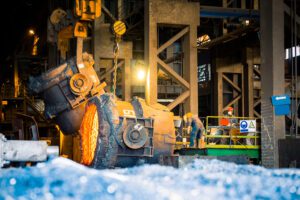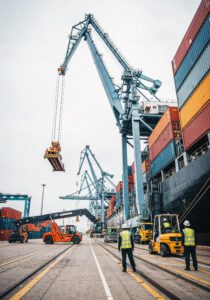Why LOLER Inspections Matter for Businesses in South Humberside
Overview and History of South Humberside
South Humberside was a former administrative county in England that existed from 1974 until it was abolished in 1996. It covered the southern part of the historic county of Yorkshire, including the industrial towns of Grimsby, Immingham, Scunthorpe, Barton-upon-Humber, and Brigg. After its dissolution, the area was divided into two unitary authorities: North Lincolnshire and North East Lincolnshire. Despite the name no longer being used officially, “South Humberside” is still commonly referred to when discussing the region south of the Humber Estuary.
This area has a strong industrial identity, built on a legacy of shipping, steel, energy, and agriculture, shaped by its proximity to the Humber – one of the UK’s most important commercial waterways. The development of the Humber ports, the expansion of the steel industry in Scunthorpe, and the area’s fertile agricultural land have all contributed to South Humberside becoming a vital contributor to both the regional and national economy.
Industry in and Around South Humberside
South Humberside is one of the UK’s most industrially significant regions, particularly in sectors such as steel manufacturing, port logistics, energy, food processing, and agriculture.
1. Ports and Logistics
The ports of Grimsby and Immingham—now operated by Associated British Ports (ABP)—are among the busiest in the UK, handling a significant proportion of the nation’s cargo. Immingham is particularly important for bulk cargo, energy imports, and vehicle handling, while Grimsby has diversified into offshore wind operations and automotive logistics. The ports support thousands of jobs and are a key driver of growth in the Humber Freeport, established to encourage international trade and investment.
2. Steel and Heavy Industry
Scunthorpe is home to the UK’s largest steelworks, historically operated by British Steel, and still a major employer and industrial base in the area. The town’s economy has been shaped for over a century by steel production, which supports downstream industries including construction, rail, and manufacturing. Despite facing global pressures, the steelworks remain a core part of the industrial identity of South Humberside.
3. Energy and Renewables
The South Humber Bank is emerging as a centre for renewable energy, particularly in offshore wind, bioenergy, and industrial decarbonisation. The area hosts energy generation facilities, including gas-fired power stations and waste-to-energy plants, and is a key logistics base for servicing North Sea wind farms. The Humber region as a whole is part of the “Energy Estuary” initiative, positioning South Humberside at the forefront of the UK’s clean energy transition.
4. Agriculture and Food Processing
The flat, fertile land across southern Humberside supports a highly productive agricultural sector, producing cereals, vegetables, and root crops. This has given rise to a large food processing and packaging industry, particularly around Grimsby, which is internationally known for its seafood processing. Companies in this sector produce ready meals, frozen goods, and specialist food products for domestic and export markets.
5. Advanced Manufacturing and Innovation
Alongside traditional industries, the area is also investing in advanced manufacturing, automation, and innovation. Business parks and enterprise zones around Humber Bridge, Scunthorpe, and Immingham are attracting companies in engineering, technology, and logistics. These developments are supported by partnerships between industry, local councils, and education providers such as North Lindsey College and the University of Lincoln.

South Humberside remains a dynamic industrial heartland of northern England. With a powerful mix of heritage industries like steel and shipping, and emerging sectors such as renewable energy and advanced manufacturing, the region plays a critical role in the UK’s economy. Strategic investments in infrastructure, innovation, and sustainability are helping to modernise the area and position it for future growth—particularly as part of the wider Humber industrial strategy and decarbonisation agenda.
Legal Requirements Under LOLER 1998
LOLER regulations place strict duties on business owners and equipment operators. Any business in South Humberside that owns or operates lifting equipment must ensure that:
-
Lifting equipment is safe to use.
-
Examinations are carried out at regular, legally required intervals.
-
Inspections are conducted by a competent and impartial person.
Failure to comply can lead to heavy fines, prosecution, and serious safety risks.
Protecting Your Workforce and Your Business
At SEIS, we know that every business in South Humberside – whether in heavy industry, agriculture, healthcare, education, or automotive—depends on reliable, safe equipment. Regular LOLER inspections & LOLER testing reduces the risk of accidents, protect your workforce, and ensure smooth day-to-day operations. Compliance not only keeps you legal, but also demonstrates a strong commitment to employee safety.
Book LOLER Inspection




